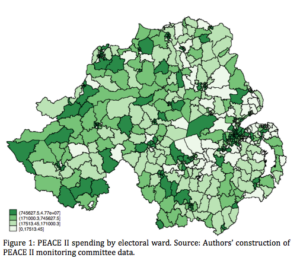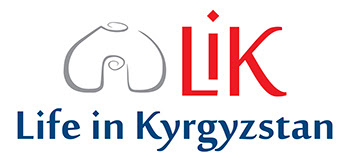Efforts to evaluate third-party peacebuilding interventions are welcome but many studies rely on experimental approaches that might be at odds with the theories that underpin the discipline. Rigorously evaluating interventions ill-suited to experimental analyses is just as important, however, especially when programmes adopt novel approaches. In this article, we employ an instrumental variables approach to evaluate one such intervention – the EU Programme for Peace and Reconciliation (PEACE II). Following contemporary peacebuilding theories, PEACE II disseminated funds to grassroots organizations via unique intermediate funding bodies and an innovative open competition. Splitting Northern Ireland into 582 wards, we merge panel data on individuals’ perceptions of neighbourhood quality with PEACE II’s accounts. One-stage analyses show that individuals in treatment regions report significantly elevated perceptions. Two-stage approaches, accounting for biases arising from the rollout method, show no significant relationship. Post-estimation analyses imply that funding did not reach areas with the poorest observable indicators. We thus remain agnostic on the effectiveness of the funded projects but conclude that, despite solid theoretical foundations, weaknesses in the application of these theories hampered potential positive impacts. Future interventions can learn from this and should ensure stronger ties between the theoretical base and how these theories are applied to funding disbursement.
Publication Details
- Year of Publication: 2018
- Region/s: Europe
- Theme/s: Impact Evaluation · Violence & Peacebuilding
- Research Topic/s: Peacebuilding & Reconstruction · Violence & Conflict
- Method/s: Panel Data Analysis · Quasi-Experimental Designs
- DOI: https://doi.org/10.1177/0738894218766865





